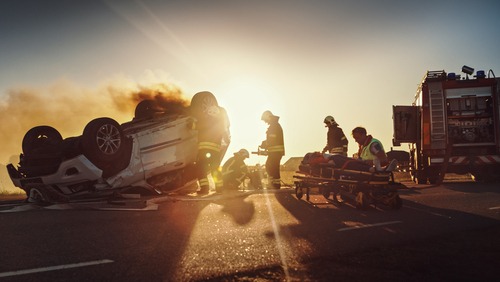Unfortunately, a fiery car crash can cause serious, even life-threatening burns that could leave disfiguring scars.
Stanford Health Care explains that you can receive the following three kinds of burns in a car crash:
- Thermal burns are caused by your body coming into contact with an external heat source, such as a hot surface, scalding liquid or the flames themselves
- Chemical burns are caused by your body coming into contact with a caustic liquid, such as antifreeze, gasoline, steering fluid, brake fluid, etc.
- Electrical burns are caused by your body coming into contact with an electrical current carried by such things as your vehicle’s hot wires or a downed power line.
Burn classifications
Medical professionals classify a burn’s seriousness as follows:
- First-degree burns, such as sunburns, affect only your skin’s outer layer, i.e., the epidermis, and consequently are superficial in nature; they usually heal on their own without medical treatment.
- Second-degree burns affect not only your epidermis but also your dermis, the second layer of your skin; these burns can cause pain, swelling and blistering.
- Third-degree burns destroy both your epidermis and dermis and damage your underlying muscles, tendons, bones and nerves; oftentimes you feel no pain because your nerves that allow you to feel it become damaged or destroyed.
Any burn that affects 15% or more of your body is a catastrophic injury that requires immediate medical intervention. In all likelihood, you face an extensive stay in the burn unit, as well as extensive rehabilitation afterward, all of which entails a great deal of pain and expense. Even then, you likely will have disfiguring scars for the rest of your life.
